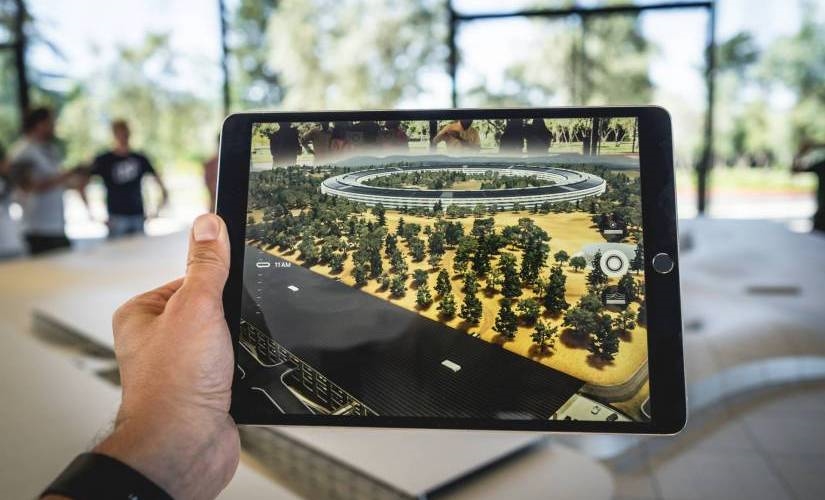How a Modern Gaming Engine Can Supercharge Your Business
How a Modern Gaming Engine Can Supercharge Your Business

Most industries are behind the times when it comes to leveraging video game engines, but widespread enterprise adoption is on the way. Here is how a modern gaming engine can supercharge your business.
The potential for the new applications of the gaming engine in your business is immense.
The gaming engine applications and success can advance in sales, marketing (think digital showrooms), and even employee training. Huge opportunities exist for innovative enterprises and entrepreneurs.
Some people may see video games as merely toys or purely for entertainment, but the engines that power this fun is serious business.
Game engines, like Unity and Epic Games’ Unreal Engine, generate all types of real-time 3D rendering content. Included is virtual reality (VR) and augmented reality (AR), primarily in the context of product design and manufacturing.
Game engines provide immersive, interactive experiences that increase user engagement, providing greater customer buy-in in all industries.
According to recent research from Market Study Report, the market for game engines will have a 13% compound annual growth rate (CAGR) from 2019 to 2024. That means the current $ 1.76 billion markets will more than double to $ 3.65 billion in the next five years.
The biggest demand for gaming engines is currently coming from the automotive, architecture, engineering, and construction industries. Manufacturers are also starting to see potential opportunities. Any industry where photo-realistic 3D visualization is valuable, from product design to city planning, can benefit from a powerful game engine.
With the right technology, it’s possible to stream interactive 3D applications to any device. Included in the possibilities are any device with an internet connection.
Quick and sure entrepreneurs and business owners are unlocking use cases and accelerating the pace of tech adoption. Real-time 3D content is becoming more widespread.
The following use cases illustrate what’s possible with the power of modern gaming engines:
1. 3D configurators.
The automotive industry is one of the leaders in the interactive 3D configuration space. Tools like Chevy’s 2020 Corvette Visualizer have sent car fans flocking to the site to customize their own dream car.
Within just the first month of the Corvette Visualizer being launched, users spent a combined 152,000 hours configuring more than 940,000 cars. The social contact is a massive win for the brand and its new mid-engine sports car.
3D configuration is a particularly powerful feature when shopping for luxury items.
Motorcycles, 4-Wheelers, individual watersport machines and boats — along with the next generation drones can all be configured into 3D. These types of purchases command a high price tag, and buyers want to see every single detail up close.
In fully-featured configurators, viewers can zoom in on specific areas of interest and move the subject around to view it from each and every angle.
Photo-realistic 3D configurators could present a great opportunity for the fashion industry.
Users can design their next outfit with the ability to zoom in on fabrics to clearly see patterns, textures, and colors in minute detail. Shoe lovers unite — design every aspect of your next pair of sneakers.
2. Training simulation.
The same engines that power the immersive worlds in today’s video games can also power detailed simulations for employee training. Simulations are a major asset that allows businesses to train employees thoroughly without putting expensive equipment or even lives at risk. Simulators don’t just remove risk, either — they also alleviate the pressure that can cause people to make bad decisions in a split second.
Using VR, Boeing has been able to cut the time it takes to train new wiring engineers by 75%. The aerospace manufacturer plans to use VR in other highly specific training scenarios.
Meanwhile, Walmart is scaling up VR training efforts. The retailer plans to reach more than 1 million associates at around 4,600 stores.
Convenience, cost, and efficiency will be important as industries continue down this road. Online streaming of real-time 3D to phones and tablets through cloud computing could eliminate the need for VR headsets and other equipment.
The potential market for training products also includes the U.S. military. As one of the biggest customers in the world, the military will use 3D training. Other industries plan to groom the next generation of pilots, construction workers, and sports superstars.
3. Virtual tours.
Powered by the right real-time 3D game engine, homebuyers can now tour photo-realistic renderings of houses or condos. All property can be viewed from around the globe without ever leaving a web browser. These tools can also have videoconferencing capabilities built-in, enabling property developers or real estate agents to walk through with buyers and deliver an experience that’s comparable to a traditional showing.
Virtual tours are also a valuable tool for builders or architects to demonstrate their capabilities. Eliminating the need for a dedicated showing of a home while enabling these professionals to reach a much broader customer base outside the immediate area.
Contractors can benefit from the ability to accurately demonstrate what major interior remodels might look like before a sledgehammer ever hits a wall.
Any type of architecture or construction can be turned into a photo-realistic 3D tour. People will be able to get a look at a restaurant before deciding on a visit, or job candidates in another city could tour their potential new office. Companies building new shopping areas will create buzz before construction even began if shoppers could take a look at what’s coming.
Real-time photo-realistic 3D gaming technology is quickly becoming mainstream. The boundaries are opening to exciting possibilities, especially for tech-savvy entrepreneurs.
New ways are always emerging to benefit from configuration and simulation technology powered by the latest crop of gaming engines. 3D configurators, training and safety simulations, and virtual tours have limitless applications. As companies see the massive potential and proven track records, gaming engines are gaining momentum.
With the cutting-edge performance of game engines like Unreal Engine and Unity, there’s no telling where this technology will take us.
Image credit: Patrick Schneider; Unsplash
The post How a Modern Gaming Engine Can Supercharge Your Business appeared first on ReadWrite.
(24)


